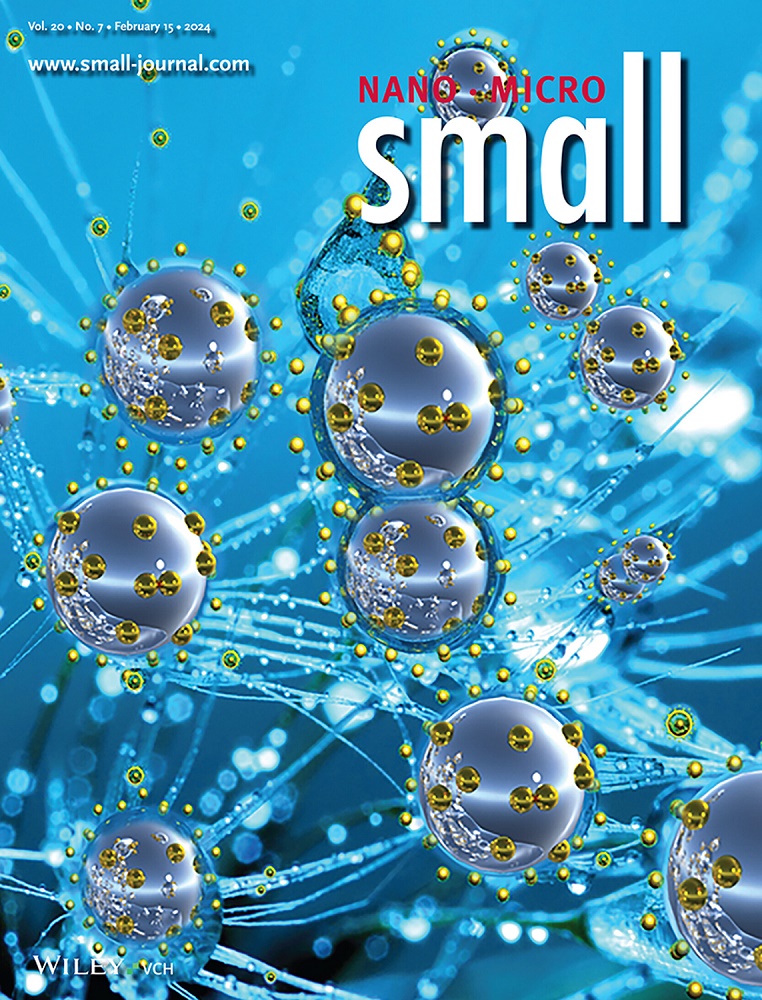Separator Engineering Regulating Reversible Li Electrodeposition Enabled by Lithiophilic Polyimide@Ag Coating Layer for Dendrite‐Free Lithium Metal Batteries
IF 13
2区 材料科学
Q1 CHEMISTRY, MULTIDISCIPLINARY
引用次数: 0
Abstract
Heterogeneity Li deposition predominantly induce the growth of Li dendrite, which hinders the practical application of lithium metal batteries (LMBs). Previous researches have mainly focused on the modification of lithium anode, but lithium is sensitive to water and oxygen, which consequently limits its industrialization process. Herein, a novel polyimide@Ag coated polyethylene separator ((PI@Ag)/PE) strategy is reported to inhibit Li dendrites growth. It has been clarified that the lithiophilic PI@Ag microspheres can greatly reduce the nucleation barrier of Li electrodeposition. Consequently, the Li//Li cells with this separator exhibit stable and dendrite‐free Li利用亲锂Polyimide@Ag涂层调节无枝晶锂金属电池可逆锂电沉积的隔膜工程
非均质锂沉积主要诱导锂枝晶的生长,阻碍了锂金属电池的实际应用。以往的研究主要集中在锂阳极的改性上,但锂对水和氧敏感,限制了其产业化进程。本文报道了一种新颖的polyimide@Ag包覆聚乙烯隔膜((PI@Ag)/PE)策略来抑制锂枝晶的生长。研究表明,亲锂PI@Ag微球可以大大降低锂电沉积的成核屏障。因此,使用该分离器的Li//Li电池在1 mAh cm - 2和5 mAh cm - 2下分别在2000小时和500小时内表现出稳定和无枝晶的Li+电镀/剥离。此外,LiFePO4//Li电池和Ni0.8Co0.1Mn0.1//Li电池在1C下循环400次后表现出优异的循环性能和容量保持能力。多种表征分析证明亲锂PI@Ag层可以显著抑制锂枝晶的生长,有助于构建稳定的固体电解质界面(SEI)层。上述结果表明,本策略为解决锂枝晶问题提供了一种简单、通用的可实现方法,具有良好的工程应用价值和广阔的前景。
本文章由计算机程序翻译,如有差异,请以英文原文为准。
求助全文
约1分钟内获得全文
求助全文
来源期刊

Small
工程技术-材料科学:综合
CiteScore
17.70
自引率
3.80%
发文量
1830
审稿时长
2.1 months
期刊介绍:
Small serves as an exceptional platform for both experimental and theoretical studies in fundamental and applied interdisciplinary research at the nano- and microscale. The journal offers a compelling mix of peer-reviewed Research Articles, Reviews, Perspectives, and Comments.
With a remarkable 2022 Journal Impact Factor of 13.3 (Journal Citation Reports from Clarivate Analytics, 2023), Small remains among the top multidisciplinary journals, covering a wide range of topics at the interface of materials science, chemistry, physics, engineering, medicine, and biology.
Small's readership includes biochemists, biologists, biomedical scientists, chemists, engineers, information technologists, materials scientists, physicists, and theoreticians alike.
 求助内容:
求助内容: 应助结果提醒方式:
应助结果提醒方式:


